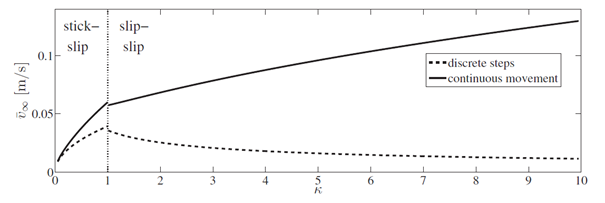Conception, excitation and characteristics of fast piezoelectric inertia drives
Piezoelectric inertia motors use the inertia of a body to incrementally drive it through an uninterrupted friction contact. Because of their simple structure and good miniaturizability, they are increasingly used in consumer goods. The velocity of these motors is an important parameter, but a general investigation of their working principle is not known to date.
Within his PhD Matthias Hunstig gave a definition of inertia motors and used a model of a translatory piezoelectric inertia motor to derive different idealized excitation signals. An investigation of the motor characteristics showed that the common operation of inertia motors with alternating phases of stiction and sliding friction is inappropriate for reaching high velocities. Frequency-limited signals for real actuators were derived from the idealized sliding-only signals for fast inertia motors. The characteristics of a motor driven with these signals were compared regarding velocity, efficiency, durability, and force. Additionally, a method for period-wise simulation of high-frequency inertia motors was described, which also allows direct calculation of important motor characteristics. A test motor was constructed to validate the theoretical results and driven with different signals. A good agreement between measurement and model was found. The results of this work give important insights into the operation of fast inertia motors, are useful for their further development and can enhance their field of application.
The PhD thesis of Dr. Hunstig is available here.
His Publications are listed here.



